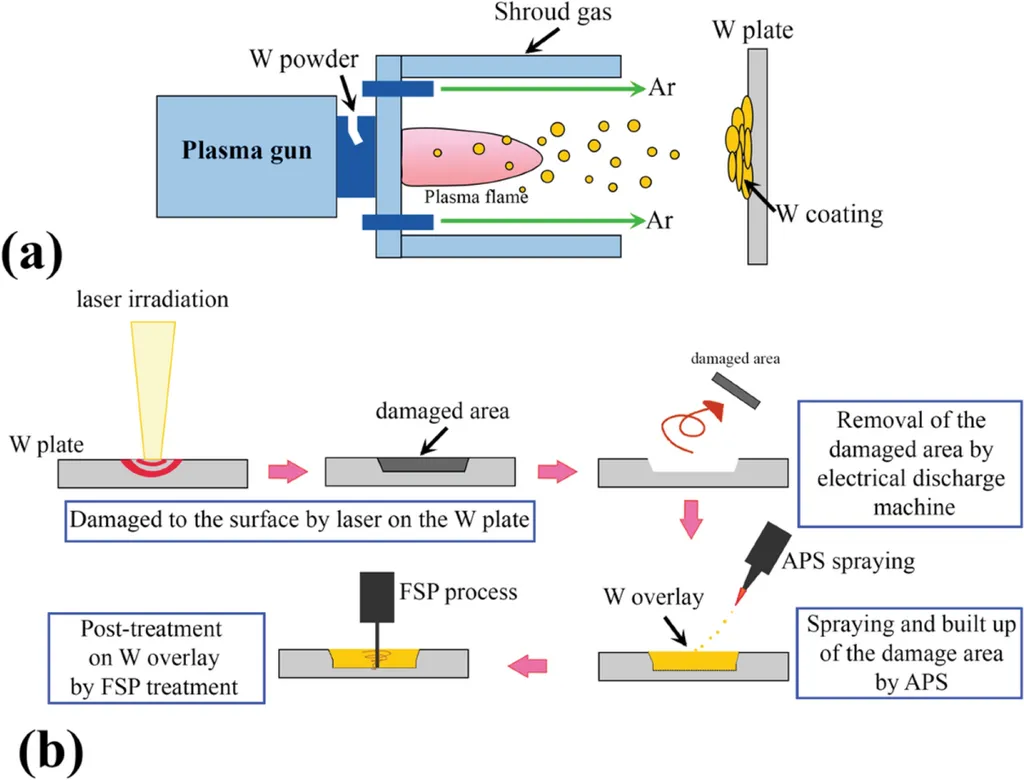In the relentless pursuit of harnessing the power of nuclear fusion, scientists are tackling one of the most daunting challenges: finding materials that can withstand the extreme conditions inside a fusion reactor. Among the contenders, tungsten stands out as a promising candidate, and a recent study published in the journal Crystals, which translates to English as Crystals, sheds new light on how to effectively use this robust metal.
At the heart of this research is Ekaterina Pakhomova, a researcher at the University of Cagliari in Italy. Pakhomova and her team have been exploring the use of plasma spraying techniques to apply tungsten coatings, aiming to protect the critical components of fusion reactors. “The key challenge is to find a material that can endure the harsh environment inside a fusion reactor without degrading,” Pakhomova explains. “Tungsten’s exceptional thermo-mechanical properties make it an ideal choice, but applying it effectively is a complex task.”
Fusion reactors operate under extreme conditions, with temperatures reaching millions of degrees Celsius. The plasma-facing materials (PFMs) that line the reactor’s interior must withstand intense heat, radiation, and mechanical stress. Tungsten, with its high melting point and excellent thermal conductivity, is well-suited for this role. However, applying tungsten coatings uniformly and ensuring they adhere well to the underlying materials is no small feat.
This is where plasma spraying comes into play. This technique involves melting tungsten powder and spraying it onto the surface of the component to be protected. The process is relatively inexpensive, fast, and can coat complex shapes, making it an attractive option for large-scale applications. “Plasma spraying allows us to deposit tungsten coatings efficiently and with high precision,” Pakhomova notes. “It’s a game-changer for the development of fusion reactors.”
The study systematically evaluates the performance of tungsten coatings produced by plasma spraying, comparing them to bulk tungsten. The researchers analyzed various properties, including porosity, oxygen content, thermal conductivity, and residual stresses at the coating-substrate interface. The results are promising: optimized plasma-sprayed tungsten coatings exhibit excellent performance, making them a viable alternative for PFM fabrication.
The implications for the energy sector are significant. As fusion technology inches closer to commercial viability, the need for durable and cost-effective materials becomes increasingly urgent. Tungsten coatings applied through plasma spraying could be the key to building more resilient and efficient fusion reactors. This advancement could accelerate the development of clean, virtually limitless energy sources, reducing dependence on fossil fuels and mitigating climate change.
Moreover, the techniques and insights gained from this research could have broader applications beyond fusion reactors. Industries that require materials to withstand extreme conditions, such as aerospace and advanced manufacturing, could benefit from these innovations. The potential for cross-sectoral impact is immense, driving forward technological progress and economic growth.
As the world looks to the future of energy, the work of Pakhomova and her team at the University of Cagliari offers a beacon of hope. Their research not only pushes the boundaries of what is possible in fusion technology but also highlights the importance of interdisciplinary collaboration and innovative thinking. The journey to harnessing the power of the stars is long and fraught with challenges, but with each breakthrough, we move one step closer to a sustainable and energy-rich future.

